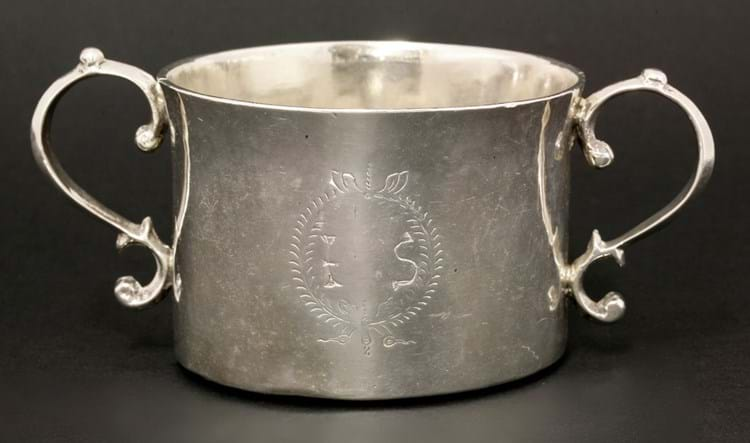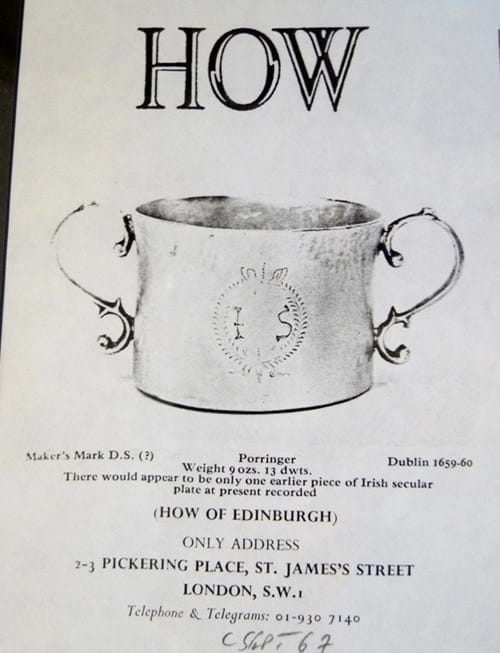
Among the tiny corpus of pre-1660 domestic wares published in Tony Sweeney’s catalogue raisonné of Irish Stuart Silver (1995) is an austere porringer from the end of the Commonwealth period.
It was shown by dealers How of Edinburgh at Grosvenor House in 1967 priced then at £3000.
Dubbed ‘the IS porringer’ on account of its engraved initials, it was pictured in an advert in Connoisseur magazine in September 1967 together with the line: “There would appear to be only one earlier piece of Irish secular plate at present recorded”. At the time, only a table salt made in Dublin c.1640 by the English migrant goldsmith George Gallant was thought to pre-date it.

An advert for dealers How of Edinburgh in ‘Connoisseur’ magazine from 1969 featuring the ‘IS porringer’.
The location of the IS porringer was unknown for almost 50 years, until earlier this year when Sworders of Stansted Mountfitchet were invited to appraise items of silver from the family of Col SL Bibby CBE.
Little is known about Col Bibby but his collection was certainly of some note. On the recommendation of Jane Penrice How (1915-2004), seven pieces from Bibby’s holdings were included in the exhibition Seven Centuries of English Domestic Silver held at the Royal Ontario Museum in 1958.
Sadly, much of the collection was subsequently stolen, and the porringer is among just eight lots that remained with the family to be offered in Essex on November 30.
Silver Marks
Its credentials and significance had been lost across the previous half century. However, with the help of the National Museum of Ireland, Goldsmiths’ Hall in London and Irish silver academic Dr Thomas Sinsteden, Sworders’ silver specialist Anita Anderson was once more able to piece together its collecting history.
In particular, blow-up photographs allowed the largely obscured marks to be read as the harp of Dublin, the date letter ‘B’ for 1659/63, but Sworders has been unable to identify the maker’s mark.
The auctioneers expect the rare survivor will attract considerable interest at its estimate of £4000-6000.




